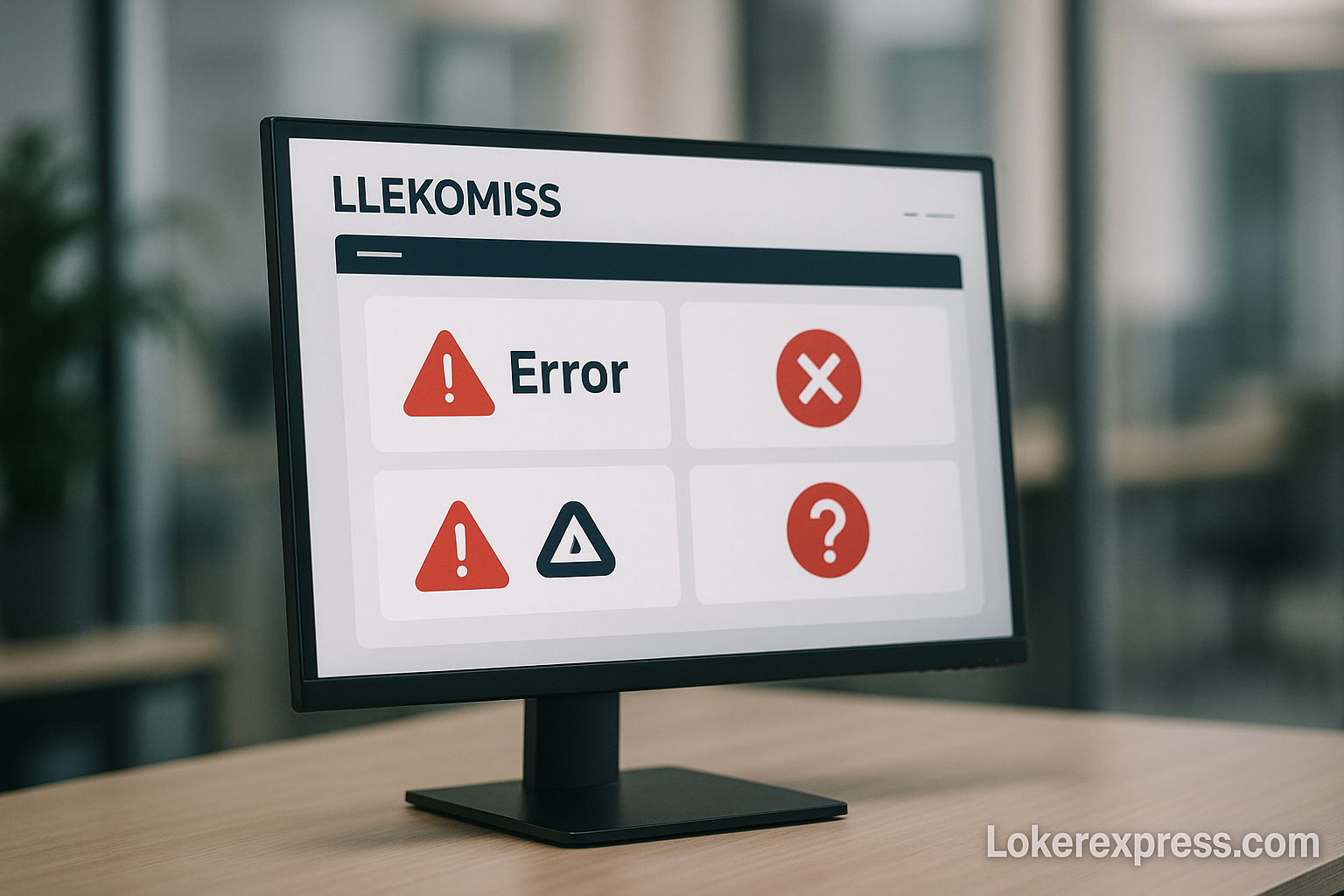When you’re using software like LLEKOMISS, everything is supposed to run smoothly, right? Unfortunately, that’s not always the case. Over the years, I’ve worked with a variety of software tools, and I’ve had my fair share of struggles with errors, performance lags, and unresponsive features. LLEKOMISS is no exception, and while it’s a great tool overall, like any software, it can sometimes throw a wrench in the works. In this article, I’ll walk you through the common problems I’ve faced with LLEKOMISS and share solutions that have worked for me.
What is LLEKOMISS Software?
Before diving into troubleshooting, let’s first clarify what LLEKOMISS software is. LLEKOMISS is a software tool designed for managing various tasks, especially in organizational settings. It helps with workflow management, automating tasks, and facilitating collaboration among teams. Whether you’re working in education, a business setting, or a non-profit, LLEKOMISS helps you keep track of projects, data, and tasks.
As someone who’s worked with this software for a couple of years, I can confidently say that it’s an excellent tool for businesses that require a central platform for managing operations. But, like all complex software, it has its occasional hiccups.
Common Problems with LLEKOMISS
When it comes to software issues, LLEKOMISS is no different from other programs. Over time, I’ve come across some common problems that I’ve had to troubleshoot myself. Here are a few of the most frequent issues that users face:
1. Installation Errors
One of the first roadblocks you might encounter with LLEKOMISS is installation problems. Often, users run into errors while trying to install or set up the software. Common installation issues include:
- Missing required components, like outdated Java or missing PHP extensions.
- Errors in the installer prevent the setup from completing.
- Compatibility issues with your operating system.
My Experience:
I had a similar issue when I tried installing LLEKOMISS on a new server. The software wouldn’t complete the installation due to missing PHP modules. After checking the installation documentation, I realized I needed to install certain PHP extensions before I could continue manually. Once that was done, the installation was completed without any further issues.
2. Login and Authentication Problems
Another issue that seems to pop up quite often is login problems. You may enter your credentials correctly, but the system might reject them or even time out. Other related issues include:
- Authentication tokens are getting invalidated unexpectedly.
- Users are being logged out after a short session.
- Password reset links are not working.
My Experience:
A friend of mine faced this issue where their login attempts kept failing. After trying a few troubleshooting steps like clearing cookies and resetting the password, the problem persisted. The root cause turned out to be incorrect session settings on the server. I had to modify the session timeout settings in the configuration file to resolve the issue.
3. Slow Performance and Freezing
LLEKOMISS users, myself included, have noticed performance slowdowns. The software might freeze, especially when dealing with large files or when multiple users are logged in at the same time. The root cause often lies in:
- Overloaded servers that can’t handle the number of simultaneous users.
- Inefficient queries in the backend database.
- Memory leaks in the software that slow down performance over time.
My Experience:
On one occasion, the software slowed down significantly when multiple users were uploading large reports. After some investigation, I discovered that the software’s database tables weren’t indexed properly. Adding the right indexes to the database improved the speed dramatically, and the freezing stopped.
4. Data Syncing Issues
For cloud-based applications like LLEKOMISS, syncing issues can be a pain. You may find that data entered on one device doesn’t appear on another, or the software fails to sync with cloud backups altogether. This could be due to:
- Server communication errors.
- Unstable internet connections.
- Sync conflicts between devices.
My Experience:
A colleague faced this syncing issue when working from home. The data entered into LLEKOMISS from her laptop wasn’t updating on the desktop back at the office. After checking the server logs, I found a network issue between her home Wi-Fi and the server. Once the network was fixed, syncing resumed smoothly.
Troubleshooting LLEKOMISS Problems: My Approach
Now that we’ve covered the most common issues, it’s time to talk about how to fix them. As someone who deals with tech issues regularly, here’s my step-by-step approach for troubleshooting LLEKOMISS.
1. Check System Requirements
The first step in any troubleshooting process is to make sure your system meets the minimum requirements for the software. Often, problems arise from incompatibilities that go unnoticed. Here’s what to check:
- Ensure your operating system is compatible with the version of LLEKOMISS you’re installing.
- Verify that you have the correct PHP version installed.
- Make sure all necessary extensions (like MySQL, Apache, etc.) are enabled.
2. Review Logs and Error Messages
Whenever you encounter a problem, the logs are your best friend. LLEKOMISS keeps logs that provide detailed information about errors and crashes. By reviewing these logs, you can often pinpoint what went wrong. Look for:
- Error codes that may indicate specific problems.
- Time stamps that help correlate when issues occur.
- Warning messages that might suggest where to start troubleshooting.
3. Monitor Performance and Resource Usage
If you’re dealing with performance issues or crashes, checking system resources is essential. Tools like Task Manager (Windows) or top (Linux) can help you monitor:
- CPU usage to see if the server is overloaded.
- Memory usage to check for leaks.
- Disk usage to ensure there’s enough space for operations.
4. Fix Database or Network Issues
If LLEKOMISS is running slow or failing to sync, check the database and network settings. Sometimes, issues like inefficient database queries or unstable network connections can cause major disruptions. Make sure:
- The database is indexed properly for quicker searches.
- Network connections are stable for cloud syncing.
- The server can handle multiple simultaneous connections.
Preventing Future Problems
Once you’ve resolved the current issue, the best way to avoid future problems is to implement proactive maintenance. Here are a few strategies that have worked for me:
- Regular Updates: Keep your software and system updated. Sometimes, bugs are fixed in newer versions, and updating ensures you’re using the most stable version.
- Backup Strategy: Make sure you have regular backups in place. If something goes wrong, you’ll want to restore your system to its previous state.
- Scheduled Maintenance: Set aside time every month to clean up old data, check performance logs, and optimize the database.
- User Training: Ensure your team knows how to use the software properly. Sometimes problems arise due to user error, and simple training can prevent a lot of issues.
When to Seek Help
Despite following the troubleshooting steps, there are times when the issue might be too complex to resolve alone. In these situations, consider seeking professional help. If you experience any of the following, it’s time to get an expert involved:
- Persistent Errors: If you can’t fix the issue after multiple attempts, it might be time for professional support.
- Security Concerns: If you suspect a vulnerability or data breach, don’t take chances—contact support immediately.
- Integration Failures: If LLEKOMISS isn’t playing nicely with other software tools, a developer might be needed to fix integration issues.
Read More: New Software Bvostfus Python: The Emerging Development Tool Reshaping Modern Programming
Conclusion
Dealing with problems on LLEKOMISS software can be frustrating, but with the right approach, you can troubleshoot and resolve issues efficiently. Start by checking system requirements, reviewing error logs, and monitoring performance. Implement proactive strategies to prevent future issues, and don’t hesitate to seek help when necessary. With these steps in mind, you’ll be able to get the most out of LLEKOMISS and keep your team’s workflow running smoothly.
If you’ve encountered an issue that’s not covered here, feel free to reach out—sometimes, having another perspective can help solve the problem more quickly. Happy troubleshooting!

